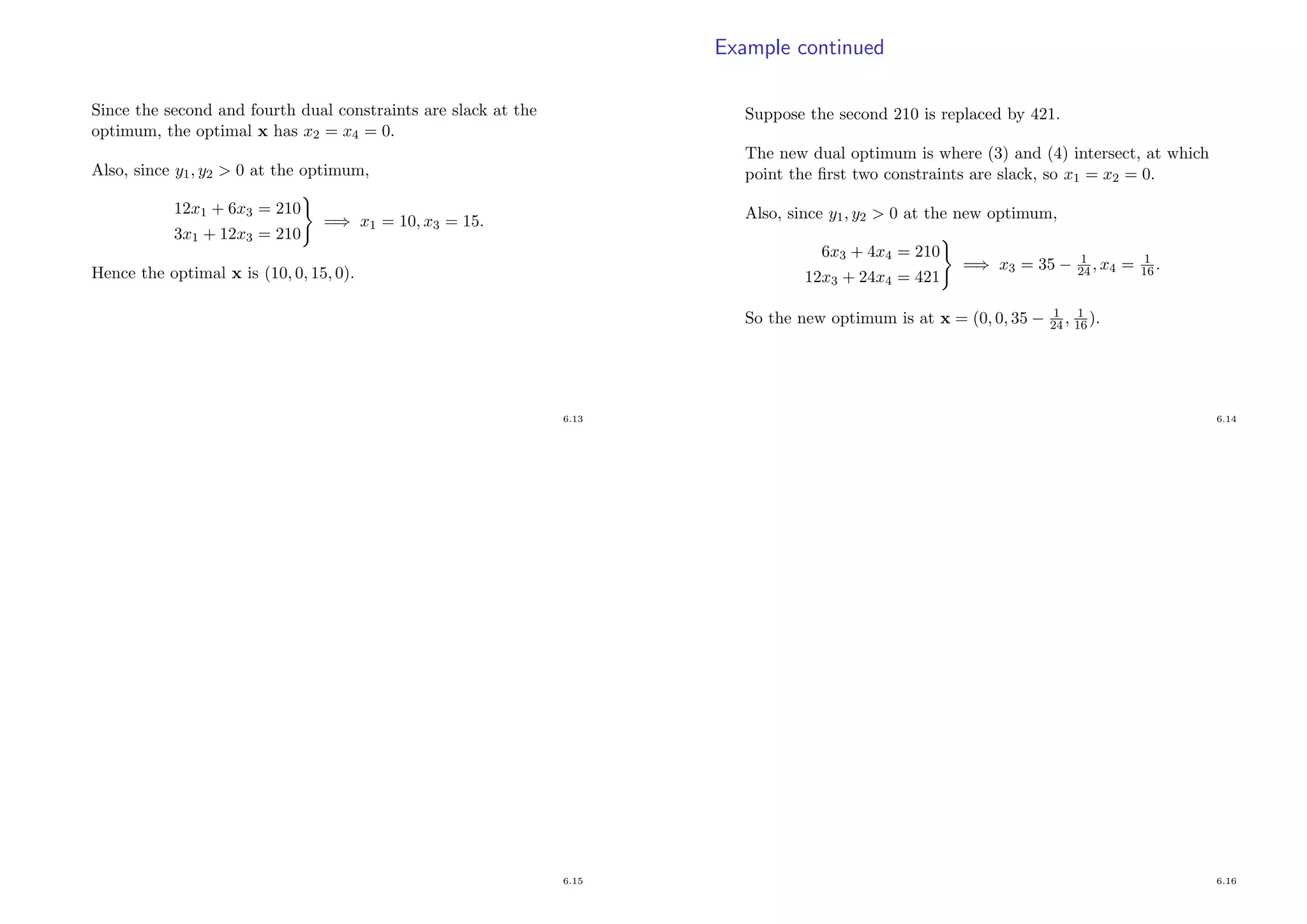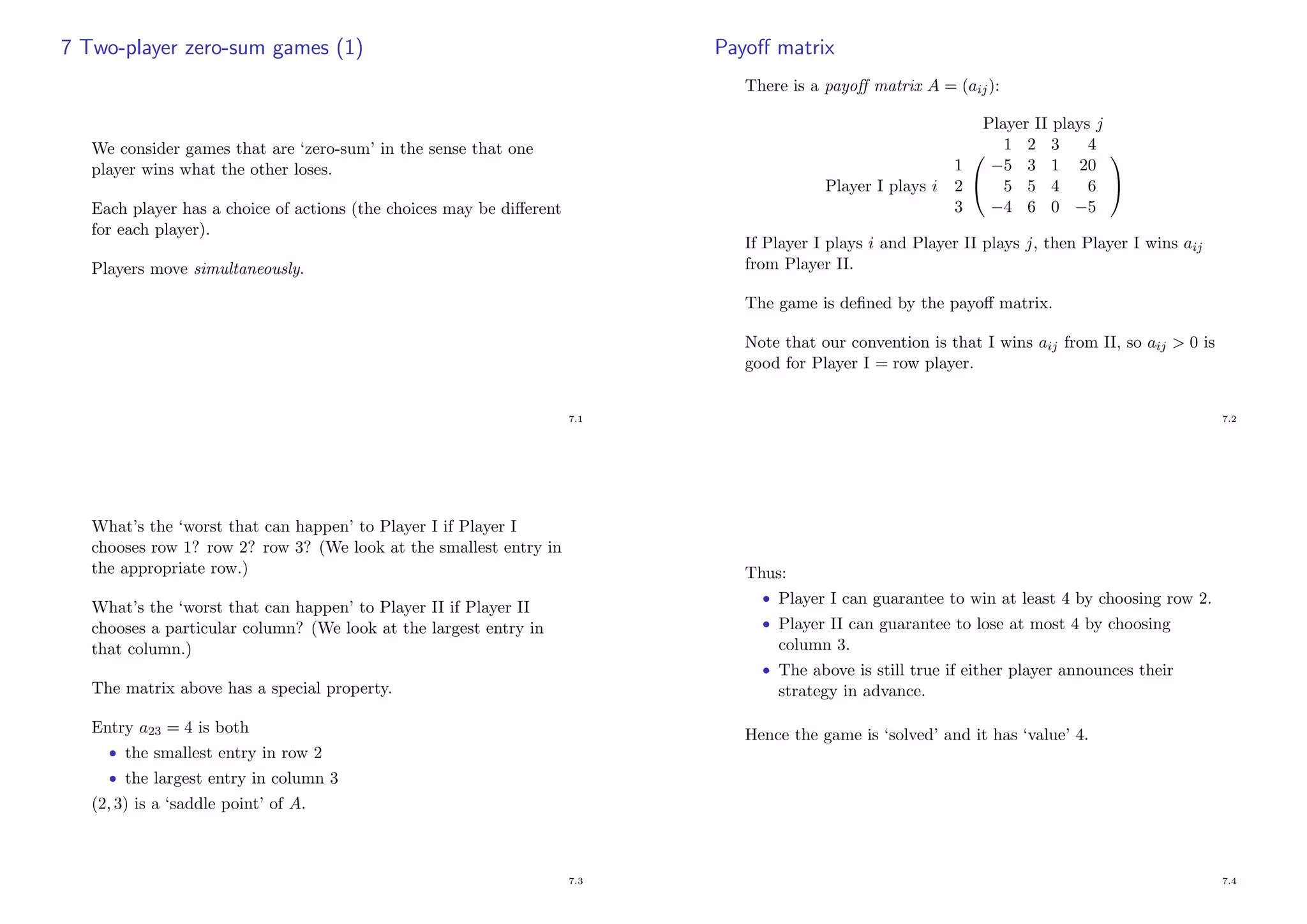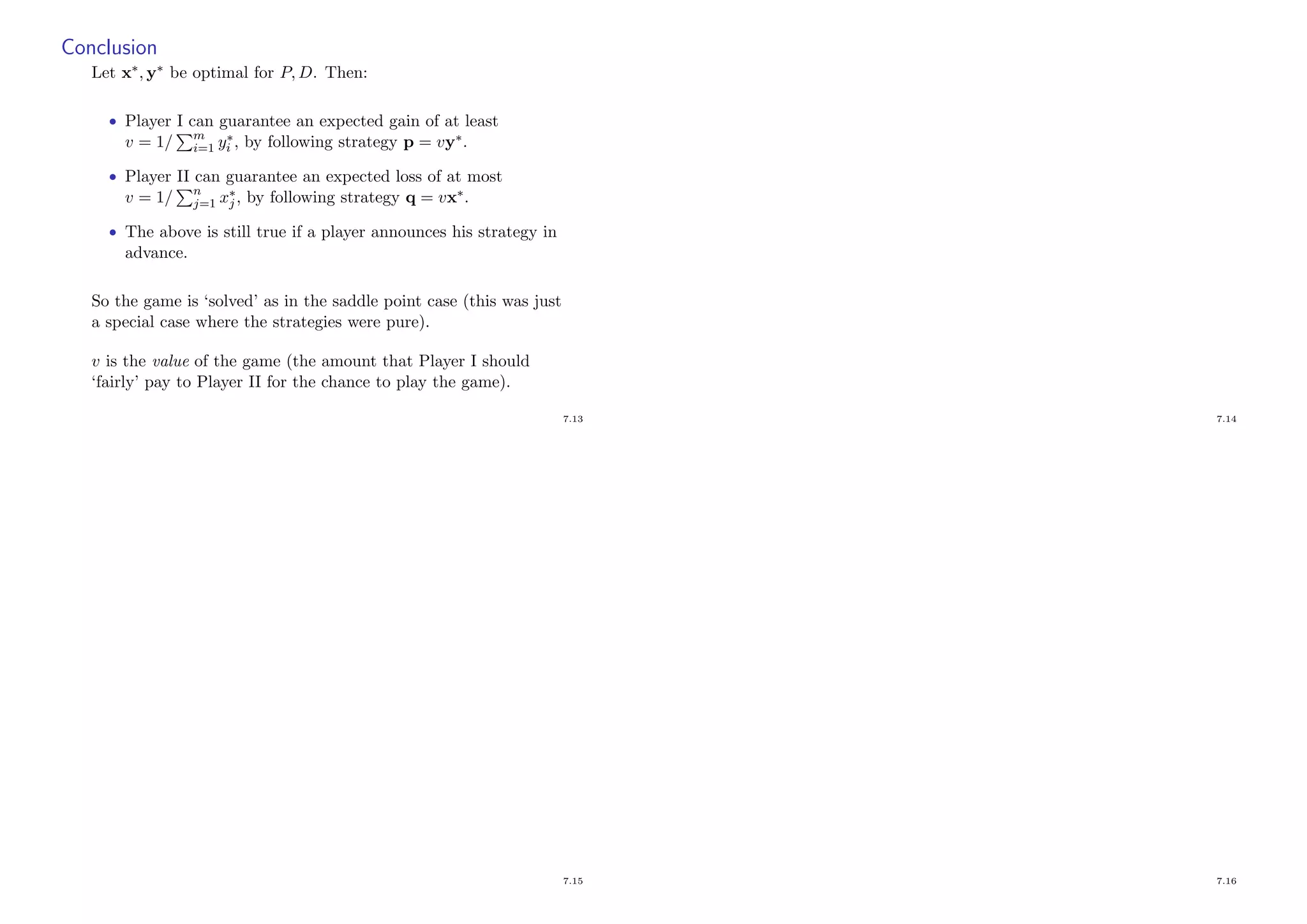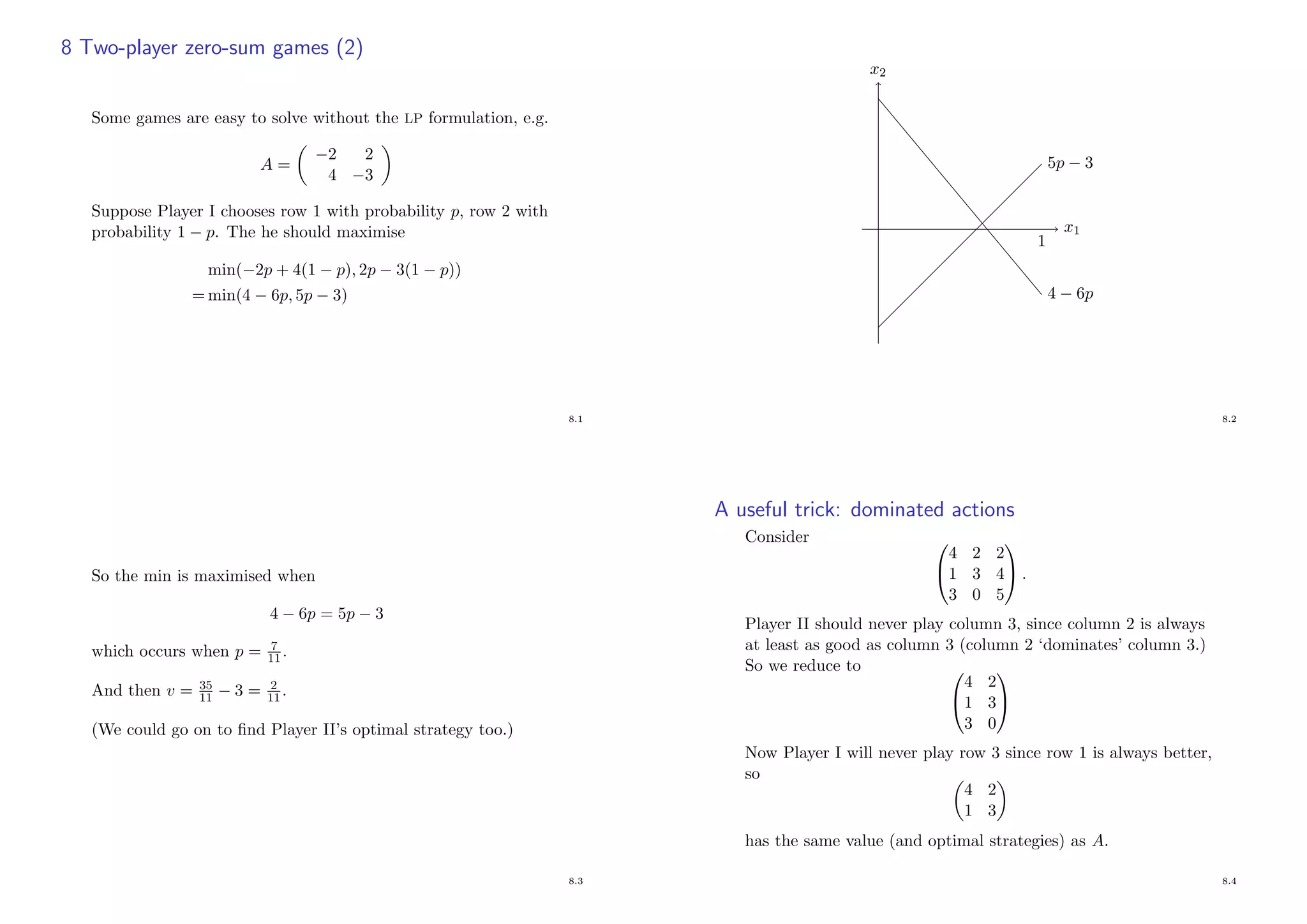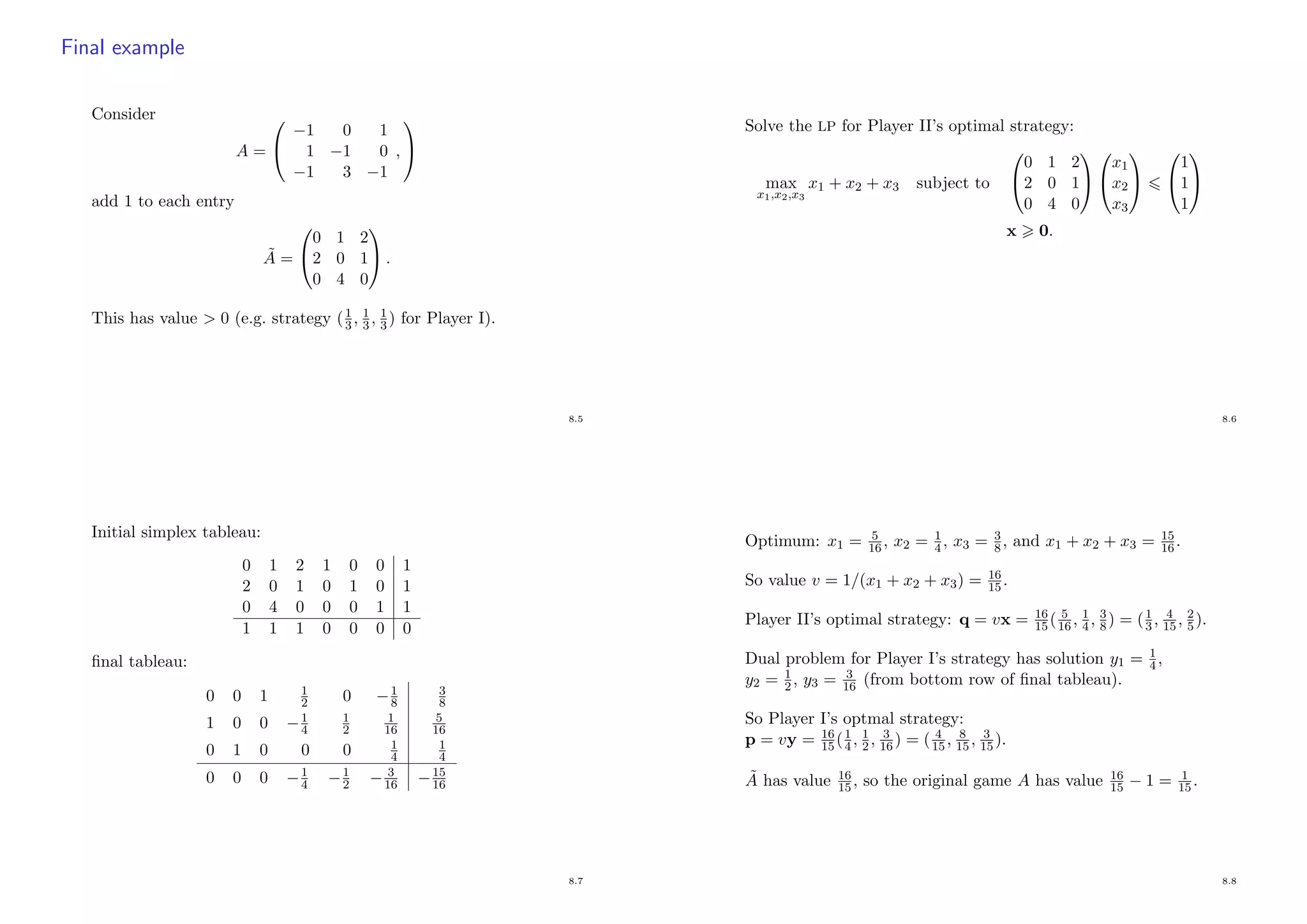The simplex algorithm is used to solve linear programming problems by iteratively moving from one basic feasible solution (BFS) to another with a better objective value. It starts at an initial BFS and checks if it is optimal. If not, it moves to a new improved BFS and repeats the process until an optimal solution is found. For the example problem of maximizing profit from two drugs given machine time constraints, the algorithm starts at BFS (0,0,9,8) and improves to BFS (4,0,5,0) by increasing the variable with the largest coefficient in the objective function while maintaining feasibility.
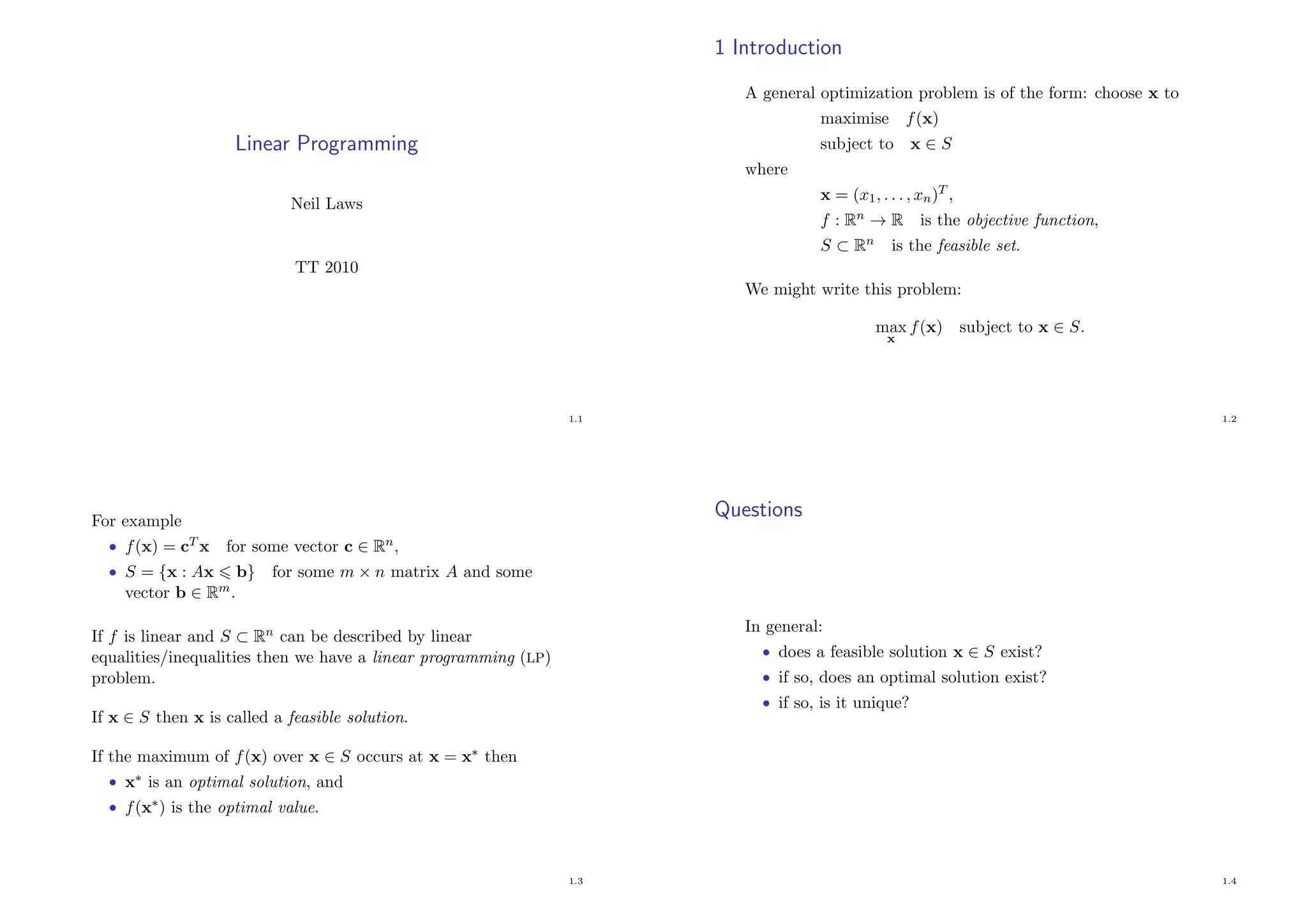
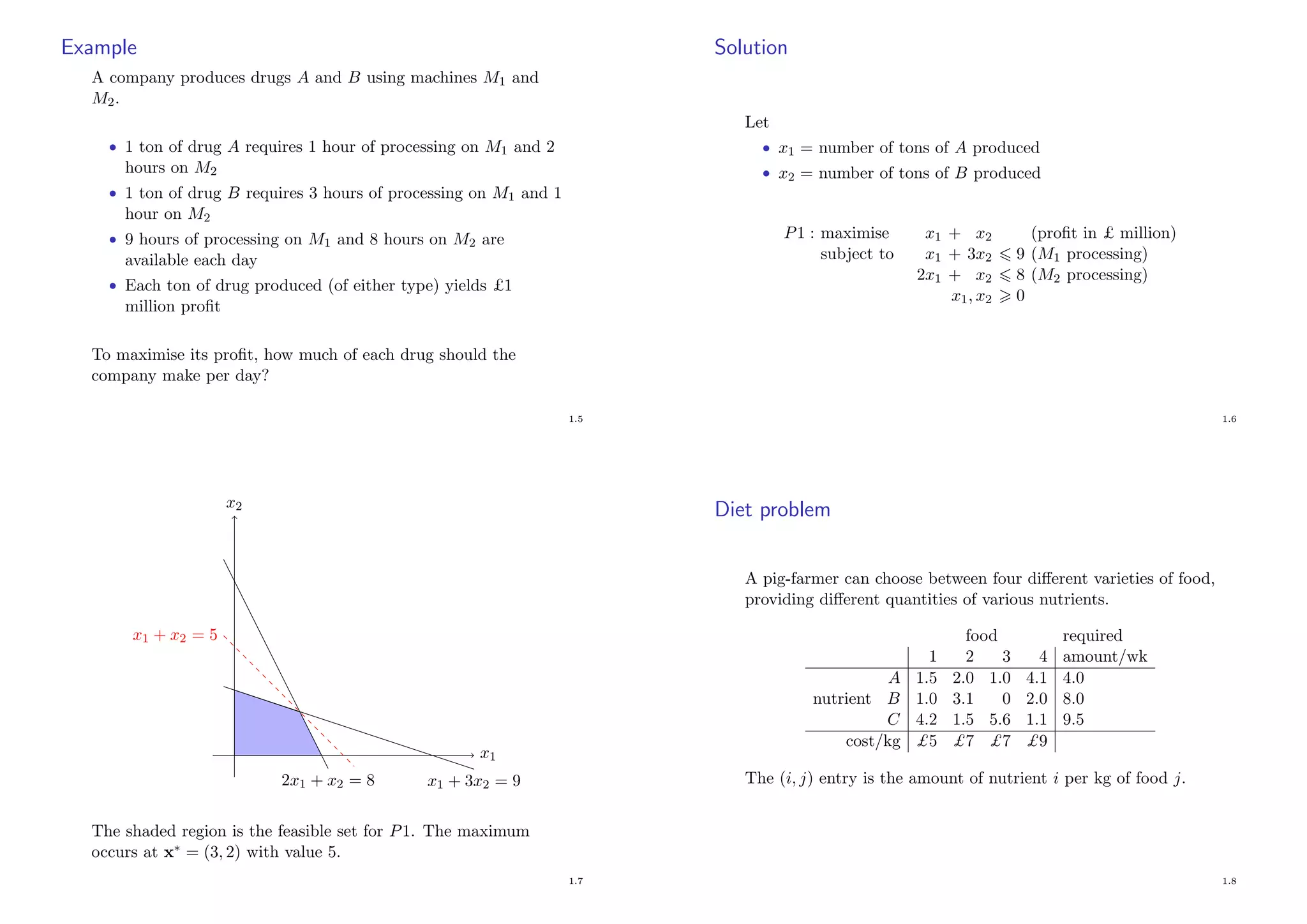
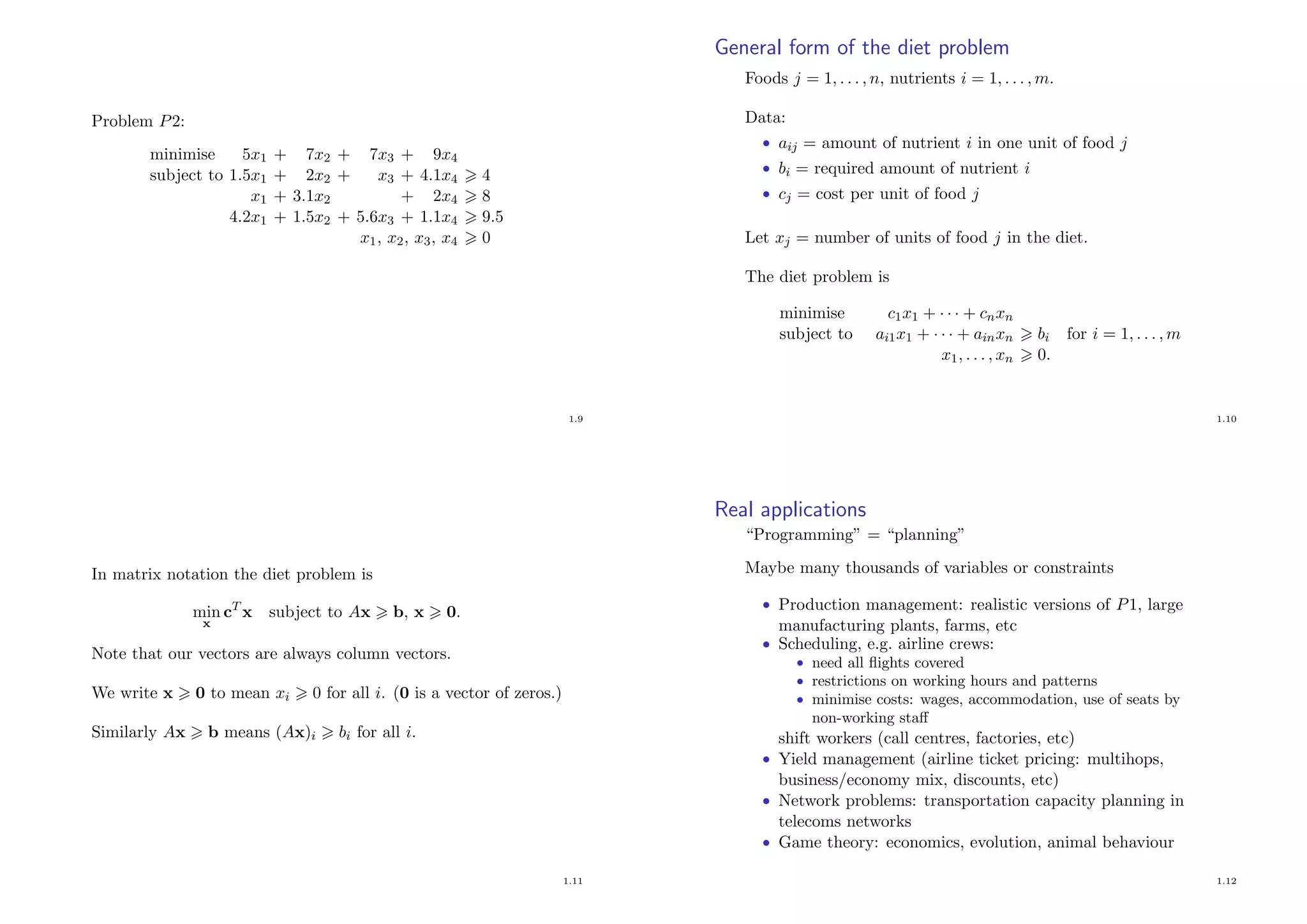
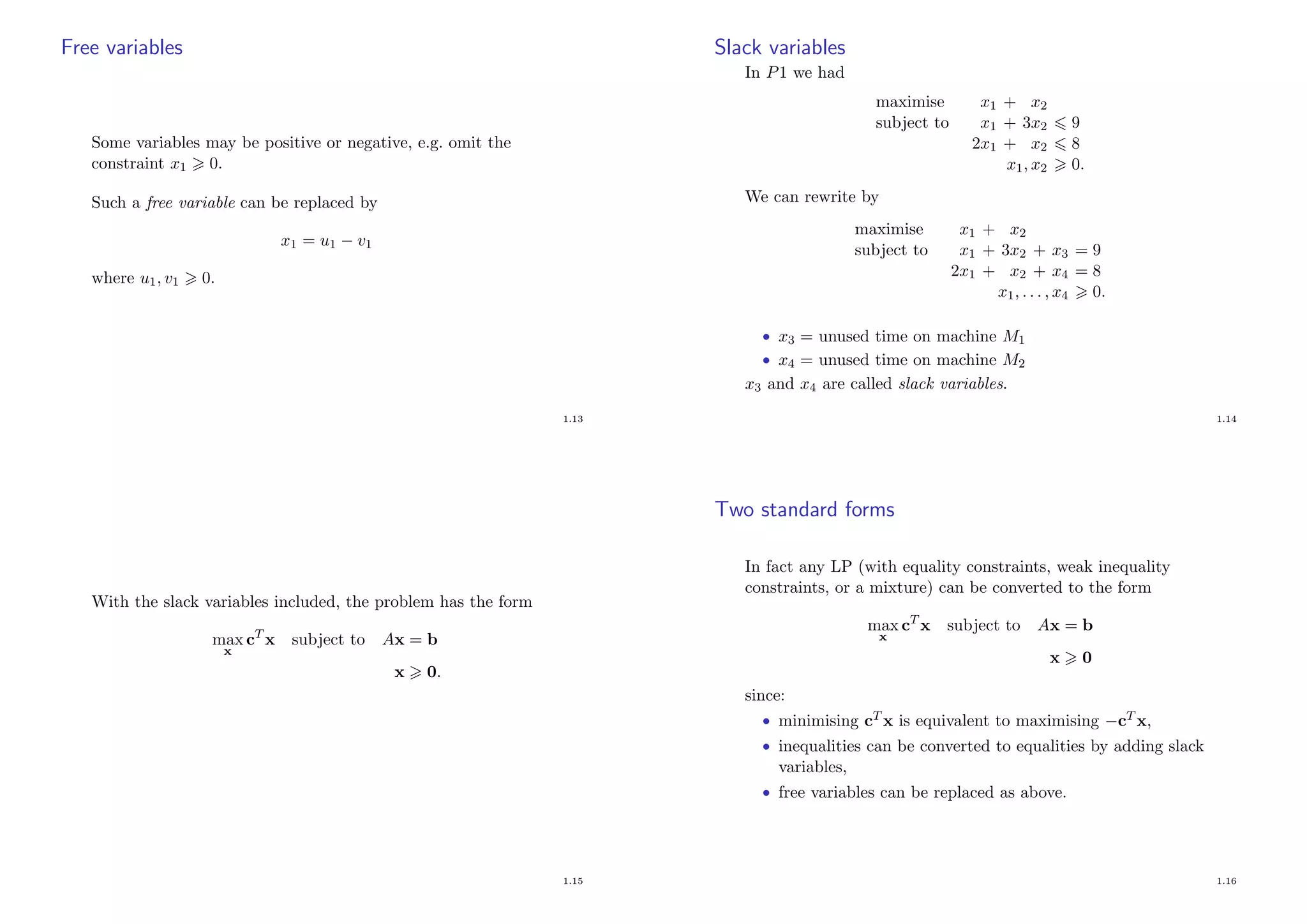
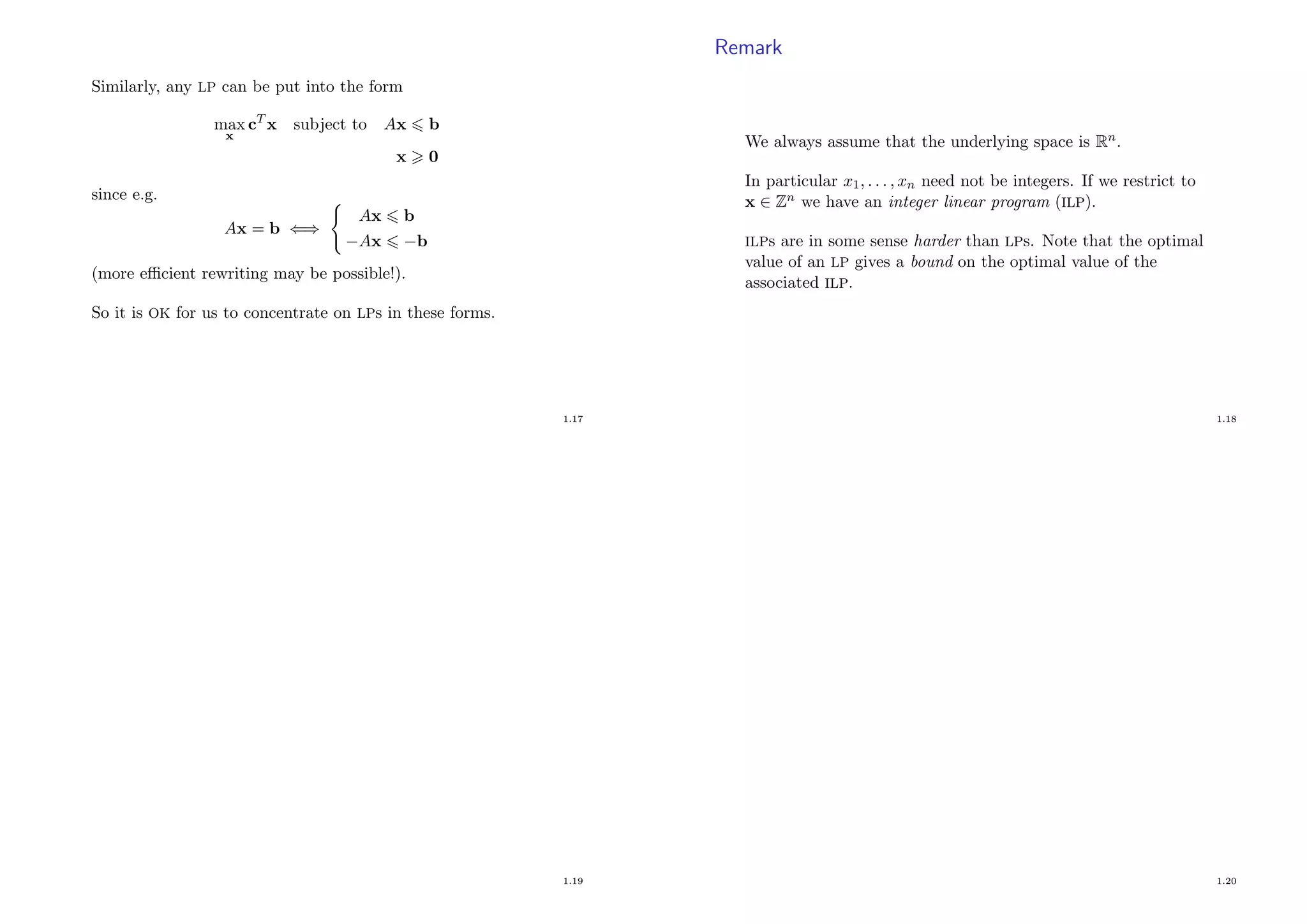
![2 Geometry of linear programming
Definition 2.1
A set S ⊂ Rn is called convex if for all u, v ∈ S and all
λ ∈ (0, 1), we have λu + (1 − λ)v ∈ S.
u
v
convex
v
u
convex
u
v
not convex
That is, a set is convex if all points on the line segment joining
u and v are in S, for all possible line segments.
2.1
For now we will consider LPs in the form
max cT
x subject to Ax = b
x 0.
2.2
Theorem 2.2
The feasible set
S = {x ∈ Rn
: Ax = b, x 0}
is convex.
Proof.
Suppose u, v ∈ S, λ ∈ (0, 1). Let w = λu + (1 − λ)v. Then
Aw = A[λu + (1 − λ)v]
= λAu + (1 − λ)Av
= [λ + (1 − λ)]b
= b
and w λ0 + (1 − λ)0 = 0. So w ∈ S.
2.3
Extreme points
Definition 2.3
A point x in a convex set S is called an extreme point of S if
there are no two distinct points u, v ∈ S, and λ ∈ (0, 1), such
that x = λu + (1 − λ)v.
That is, an extreme point x is not in the interior of any line
segment lying in S.
2.4](https://image.slidesharecdn.com/lp-150202073444-conversion-gate02/75/Linear-Programming-6-2048.jpg)
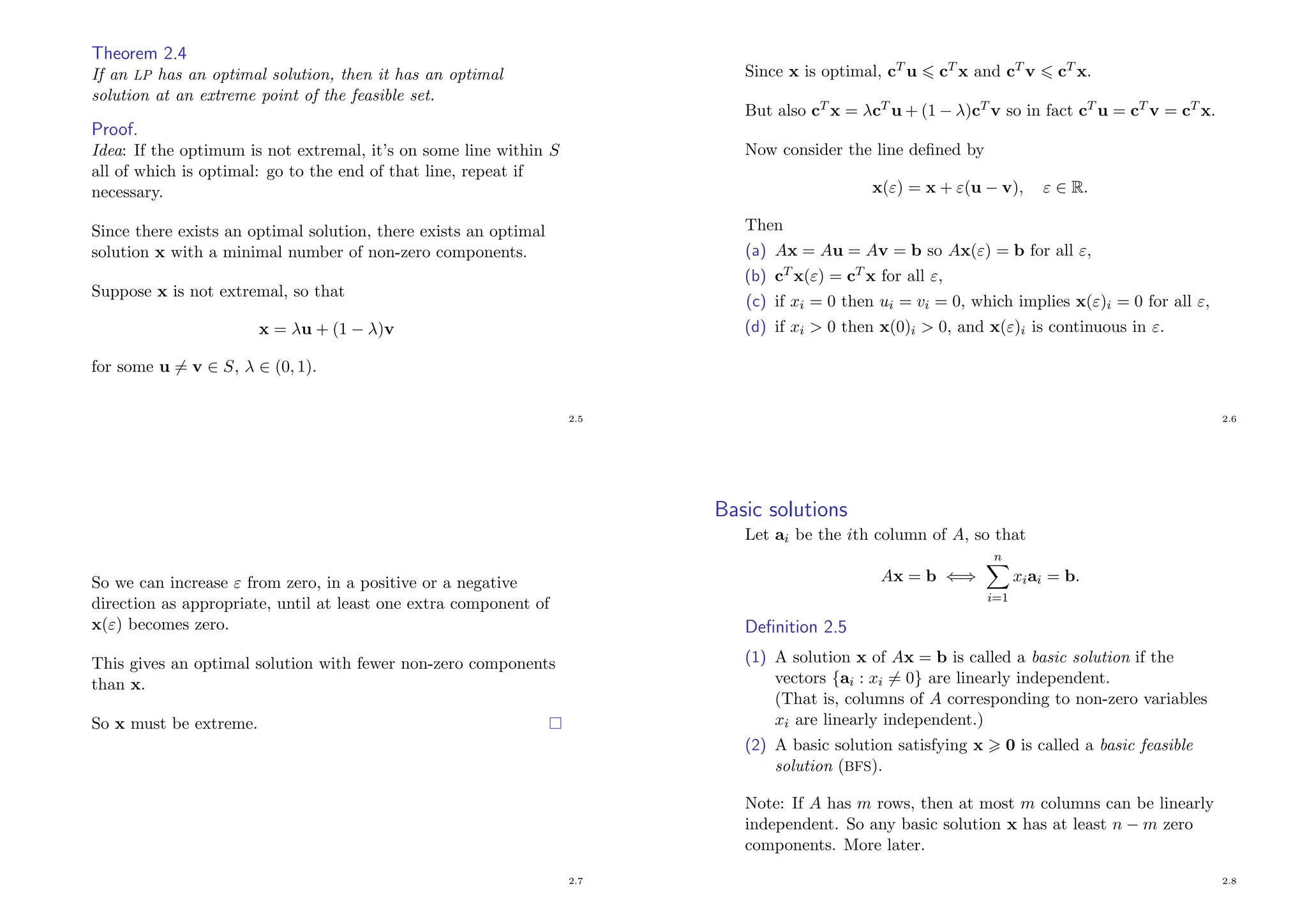

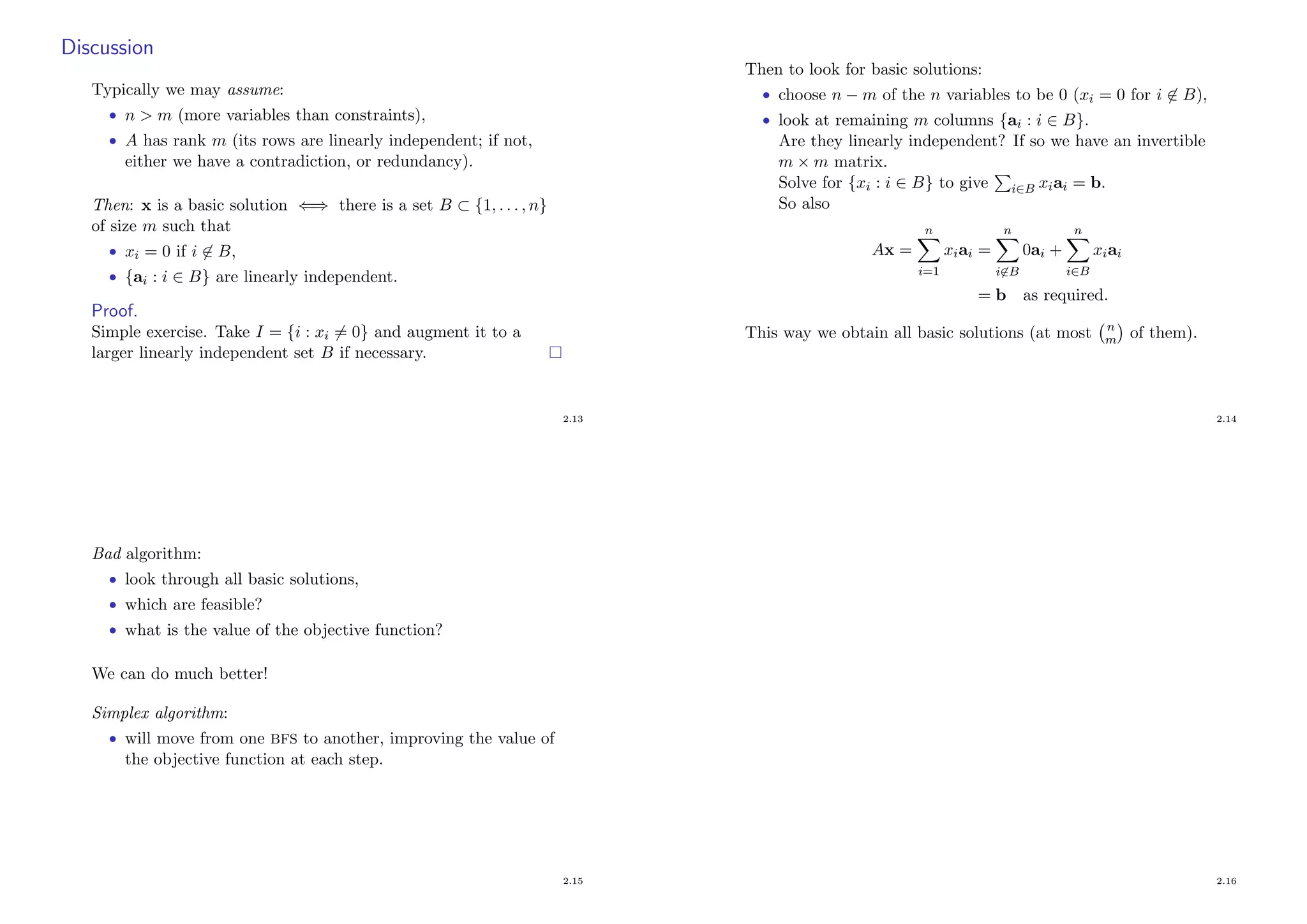
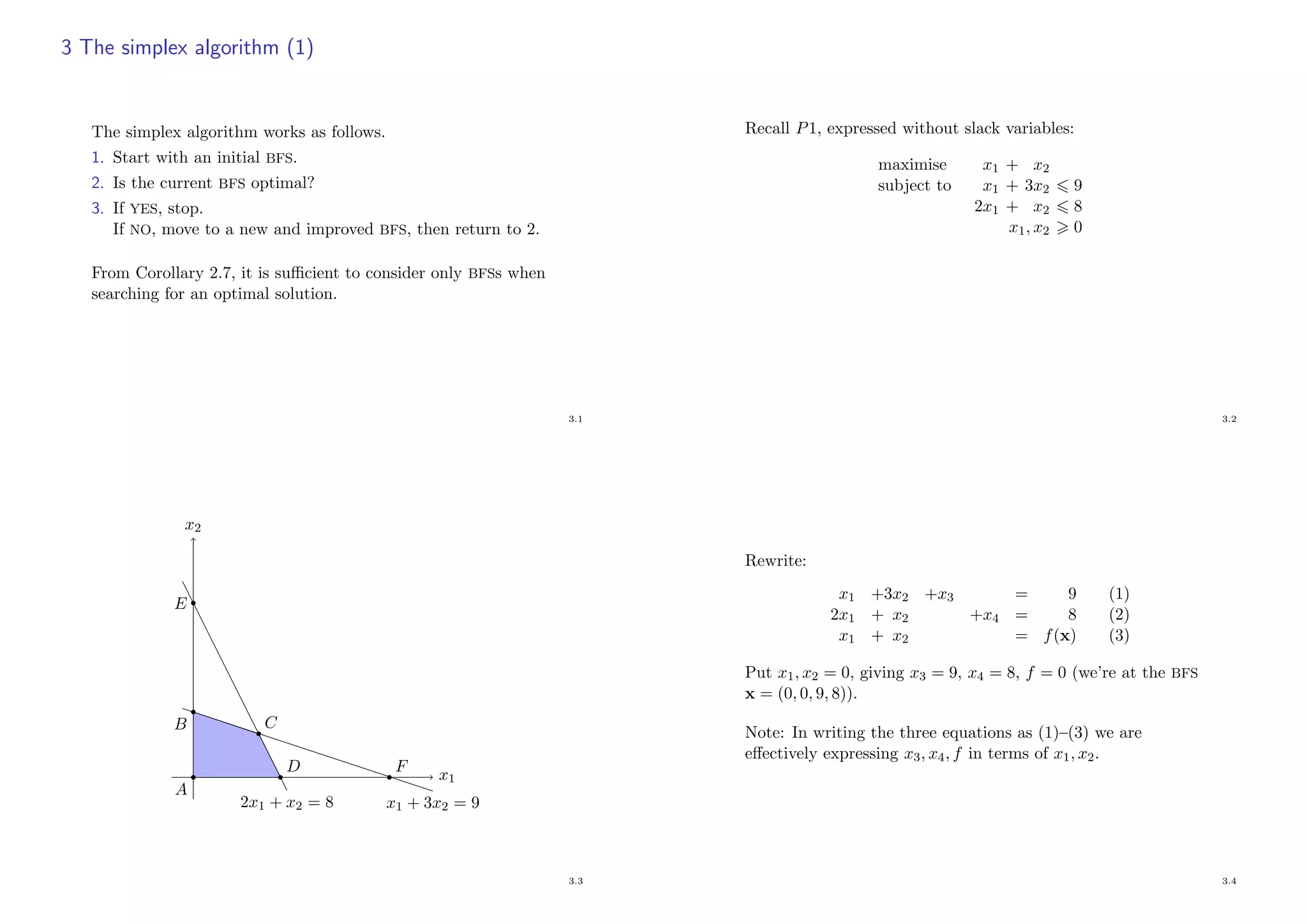
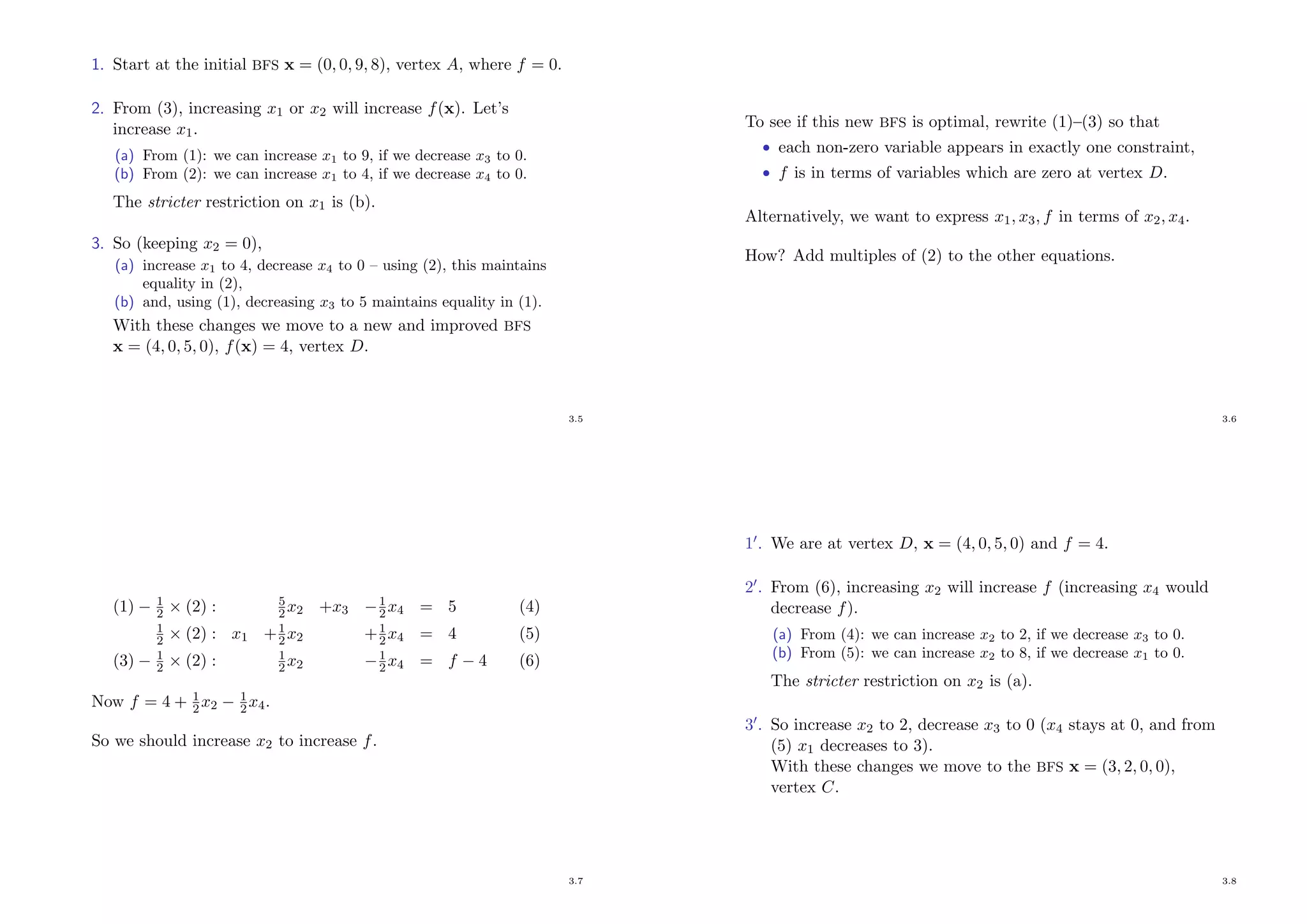

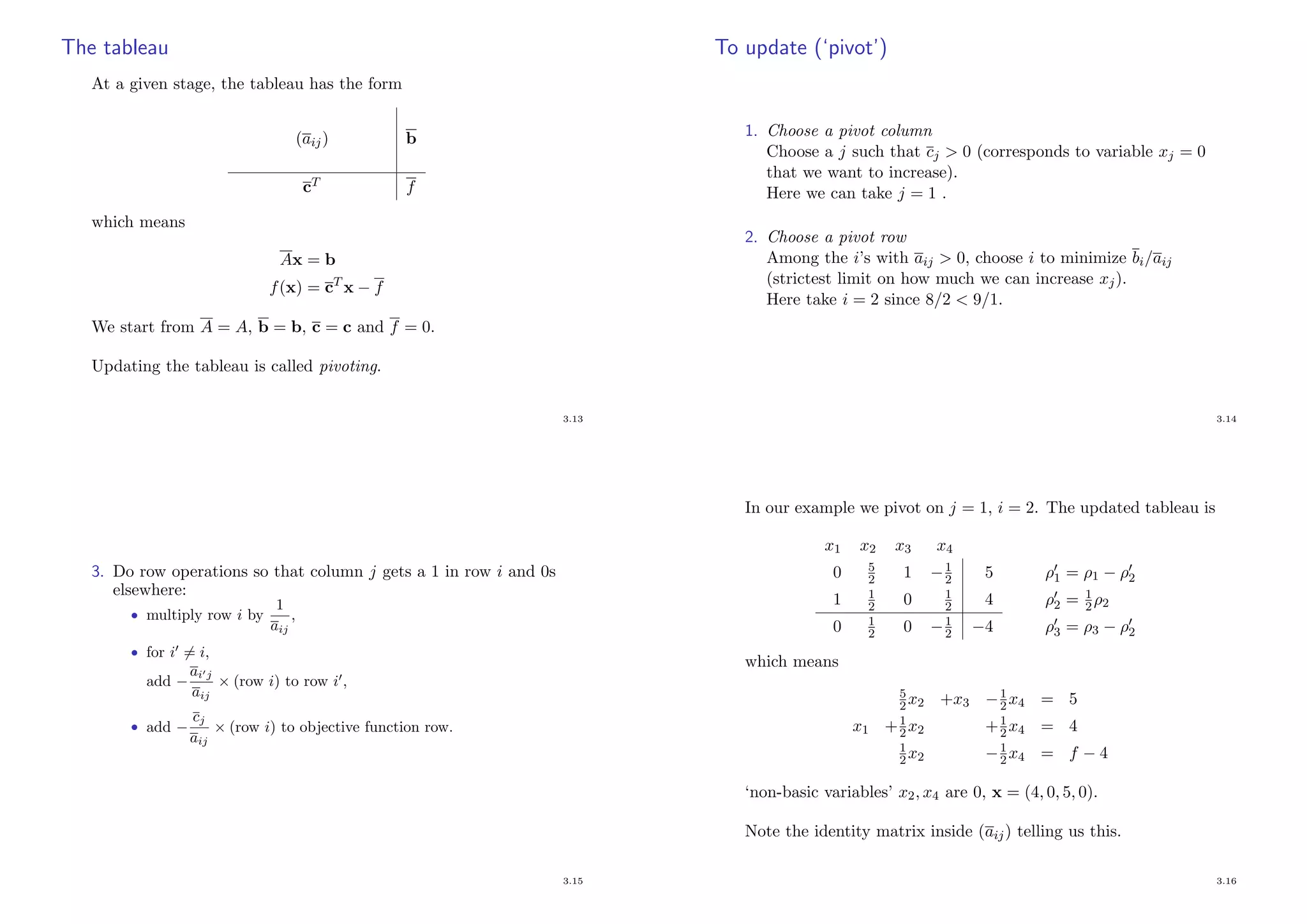
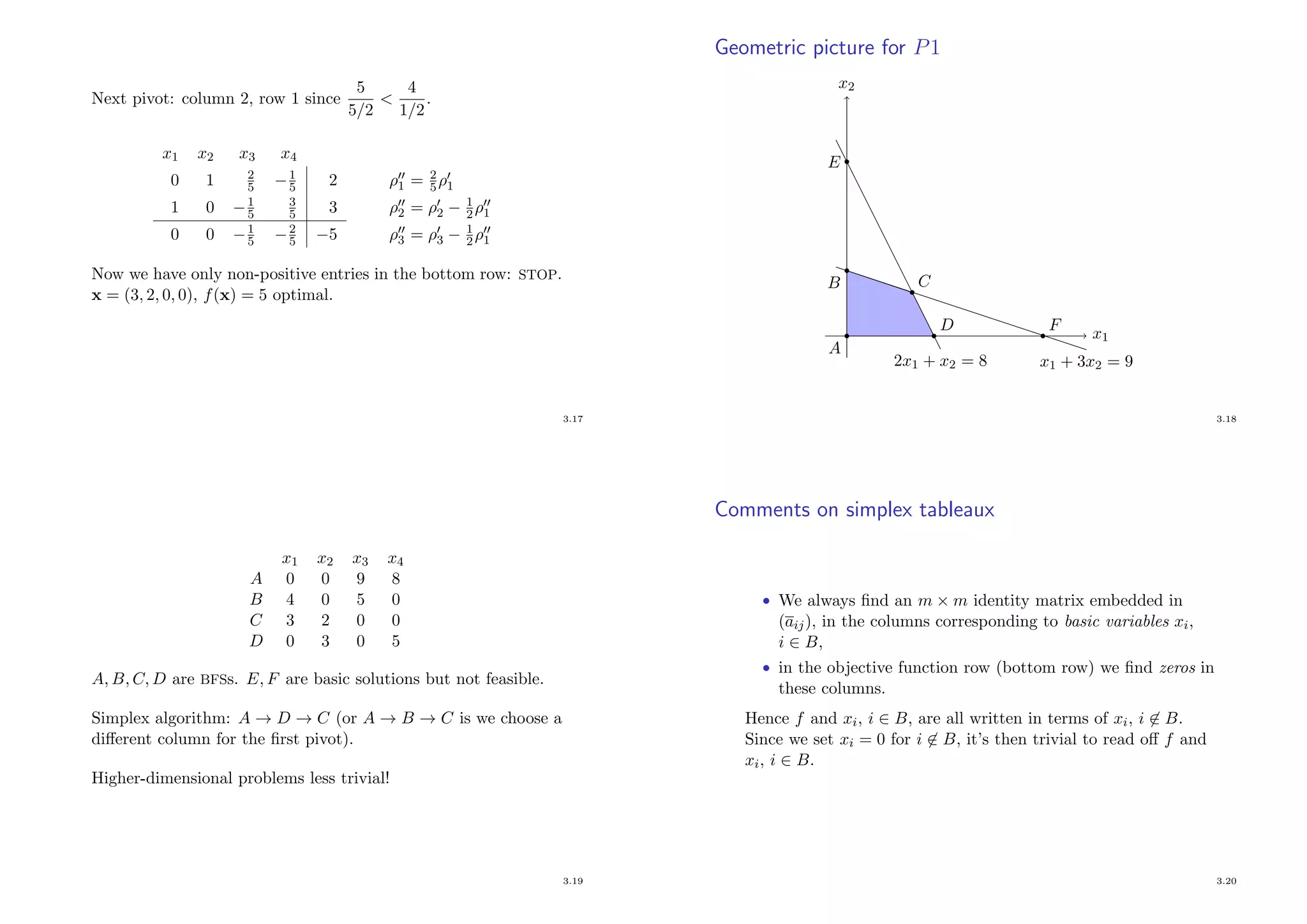
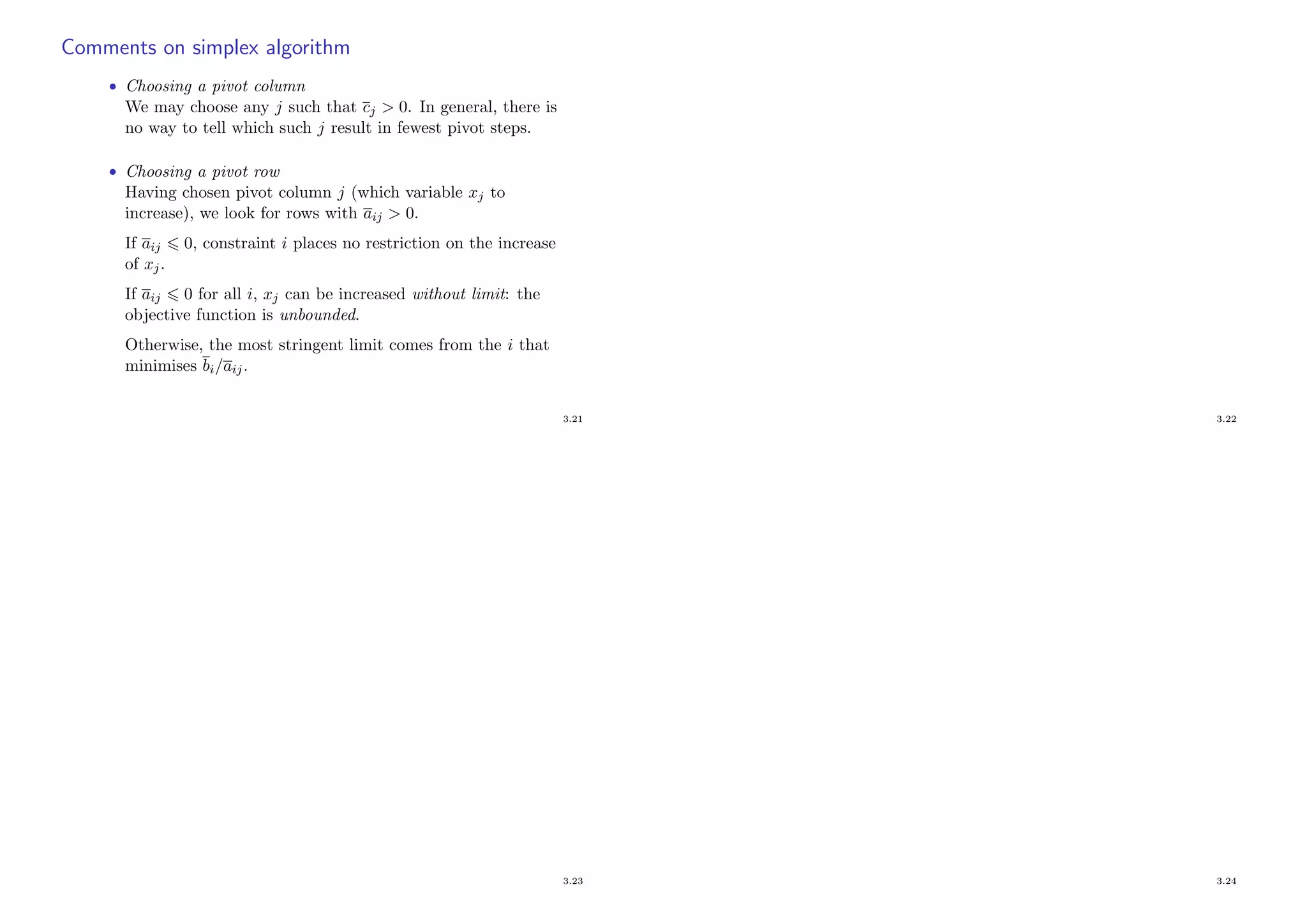
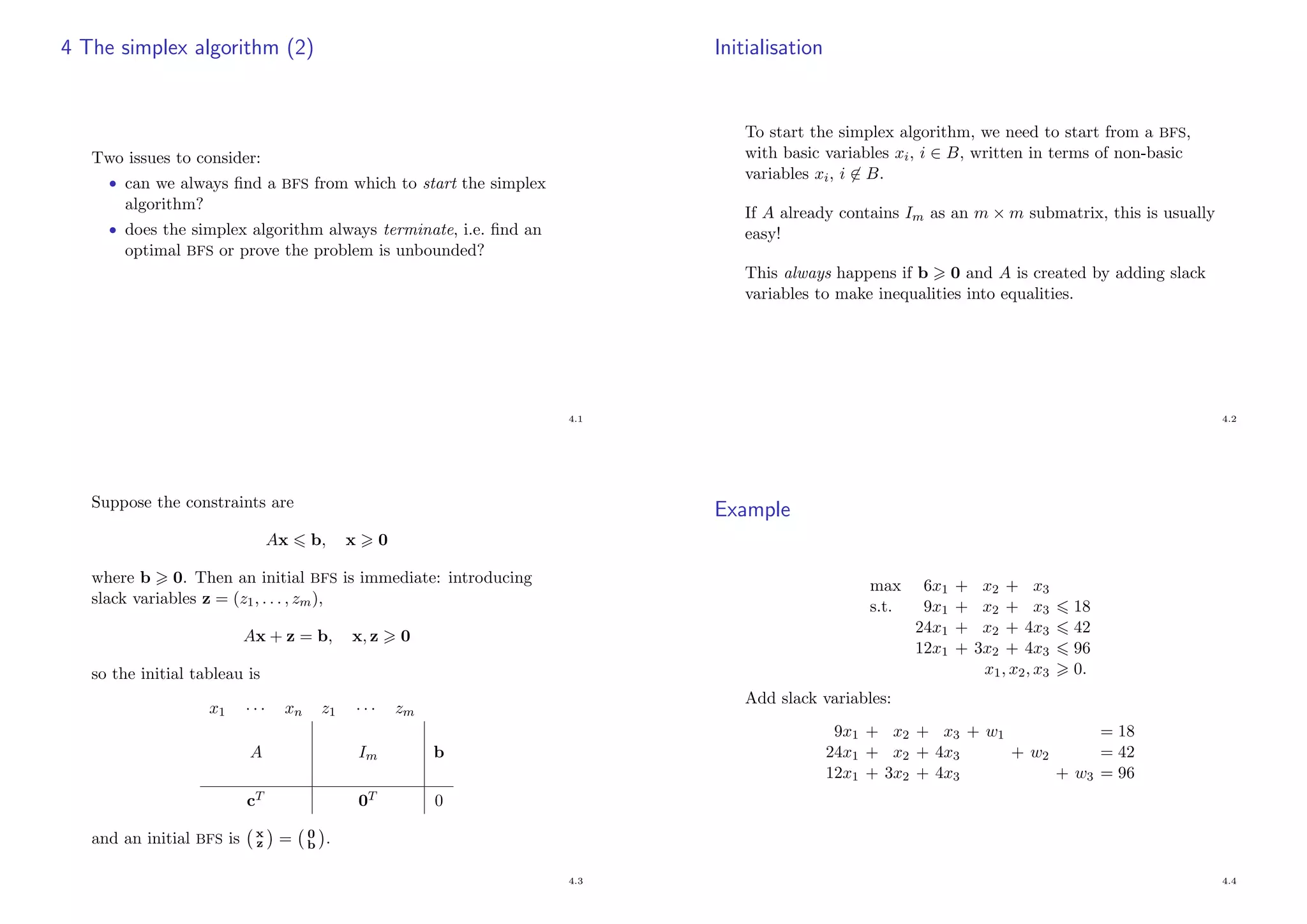
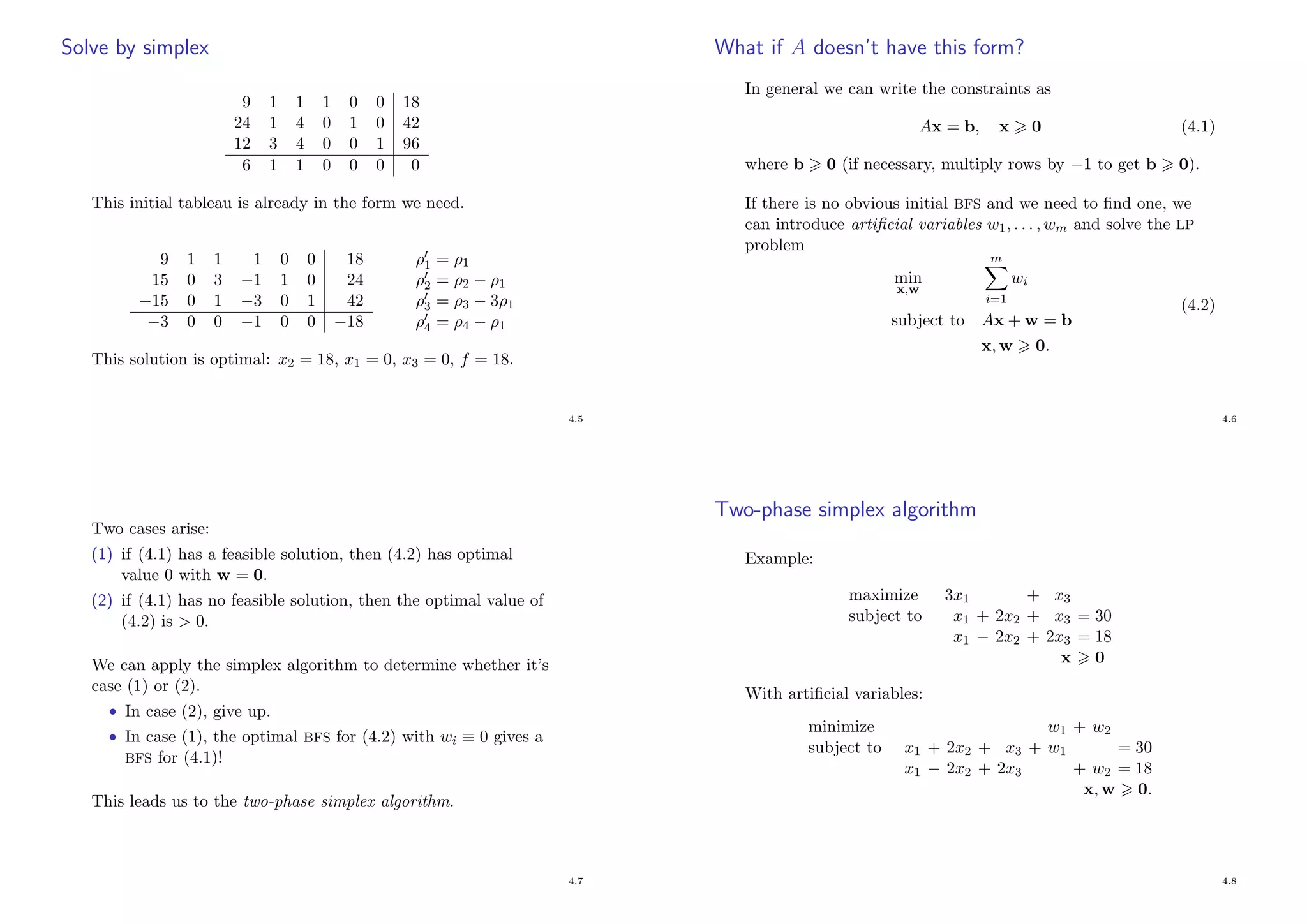
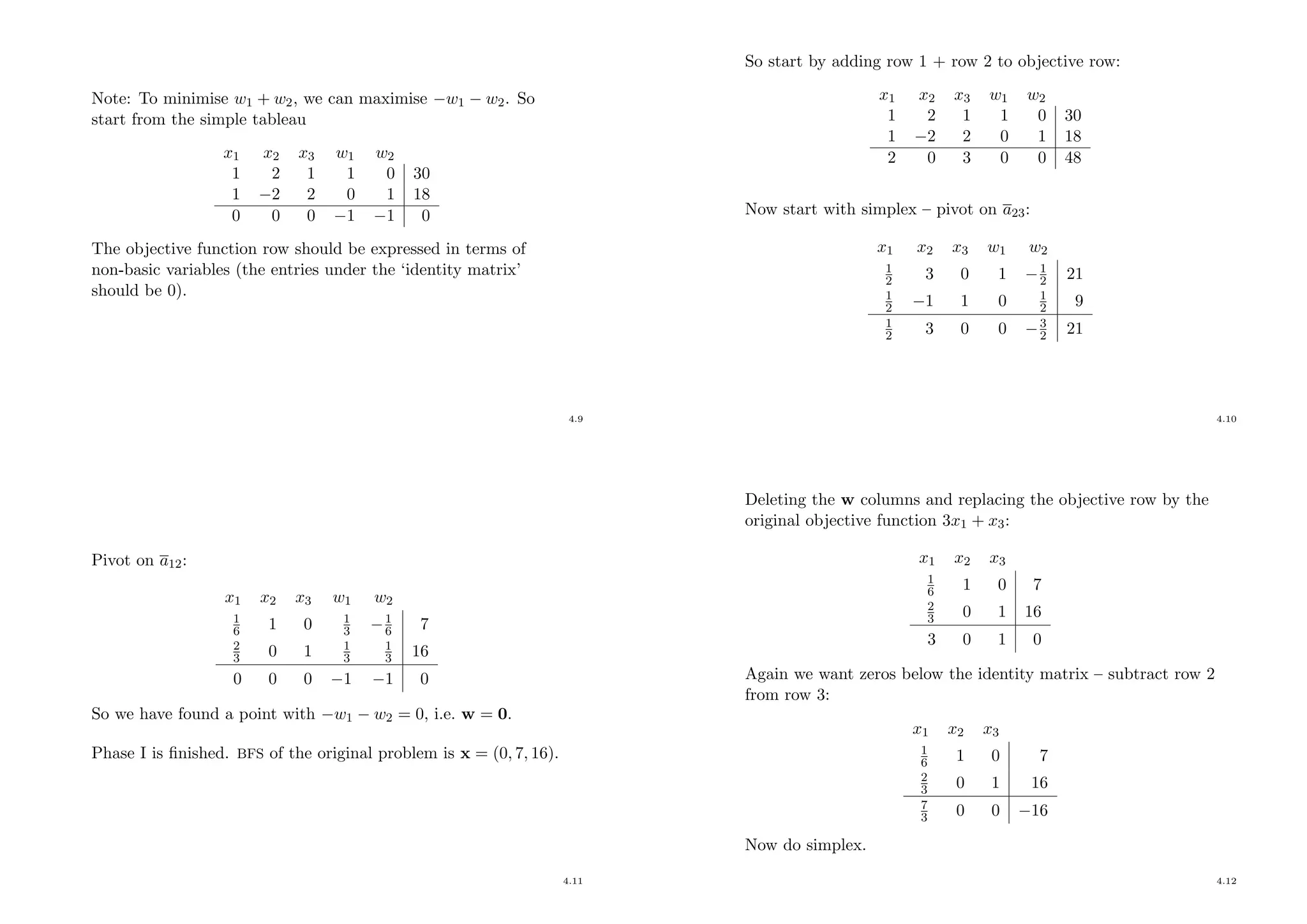
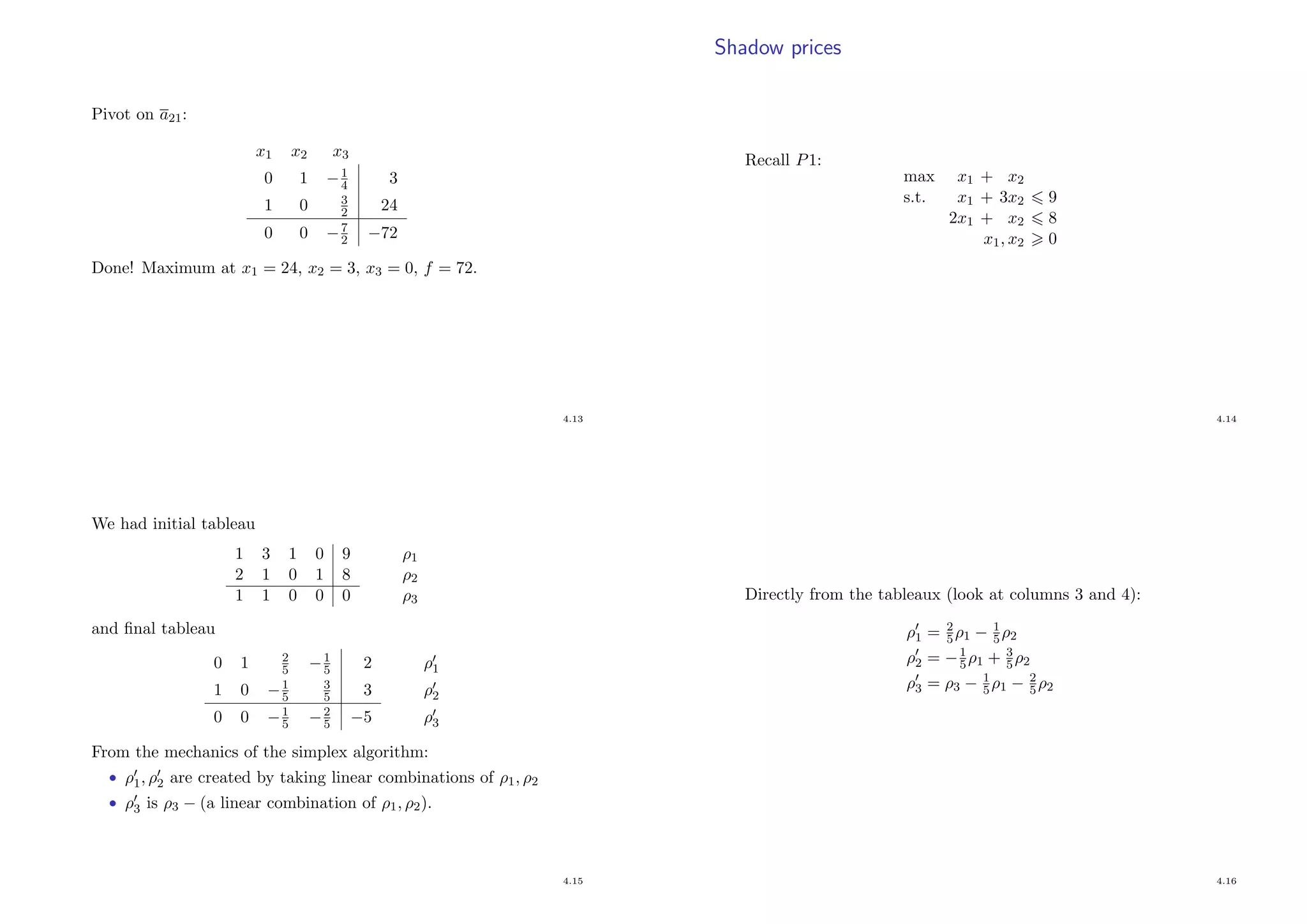

![5 Duality: Introduction
Recall P1:
maximise x1 + x2
subject to x1 + 3x2 9 (5.1)
2x1 + x2 8 (5.2)
x1, x2 0.
‘Obvious’ bounds on f(x) = x1 + x2:
x1 + x2 x1 + 3x2 9 from (5.1)
x1 + x2 2x1 + x2 8 from (5.2).
By combining the constraints we can improve the bound, e.g.
1
3[(5.1) + (5.2)]:
x1 + x2 x1 + 4
3x2
17
3 .
5.1
More systematically?
For y1, y2 0, consider y1 × (5.1) + y2 × (5.2). We obtain
(y1 + 2y2)x1 + (3y1 + y2)x2 9y1 + 8y2
Since we want an upper bound for x1 + x2, we need
coefficients 1:
y1 + 2y2 1
3y1 + y2 1.
How to get the best bound by this method?
D1 : minimise 9y1 + 8y2
subject to y1 + 2y2 1
3y1 + y2 1
y1, y2 0.
P1 = ‘primal problem’, D1 = ‘dual of P1’.
5.2
Duality: General
In general, given a primal problem
P : maximise cT
x subject to Ax b, x 0
the dual of P is defined by
D : minimise bT
y subject to AT
y c, y 0.
Exercise
The dual of the dual is the primal.
5.3
Weak duality
Theorem 5.1 (Weak duality theorem)
If x is feasible for P, and y is feasible for D, then
cT
x bT
y.
Proof.
Since x 0 and AT y c: cT x (AT y)T x = yT Ax.
Since y 0 and Ax b: yT Ax yT b = bT y.
Hence cT x yT Ax bT y.
5.4](https://image.slidesharecdn.com/lp-150202073444-conversion-gate02/75/Linear-Programming-21-2048.jpg)
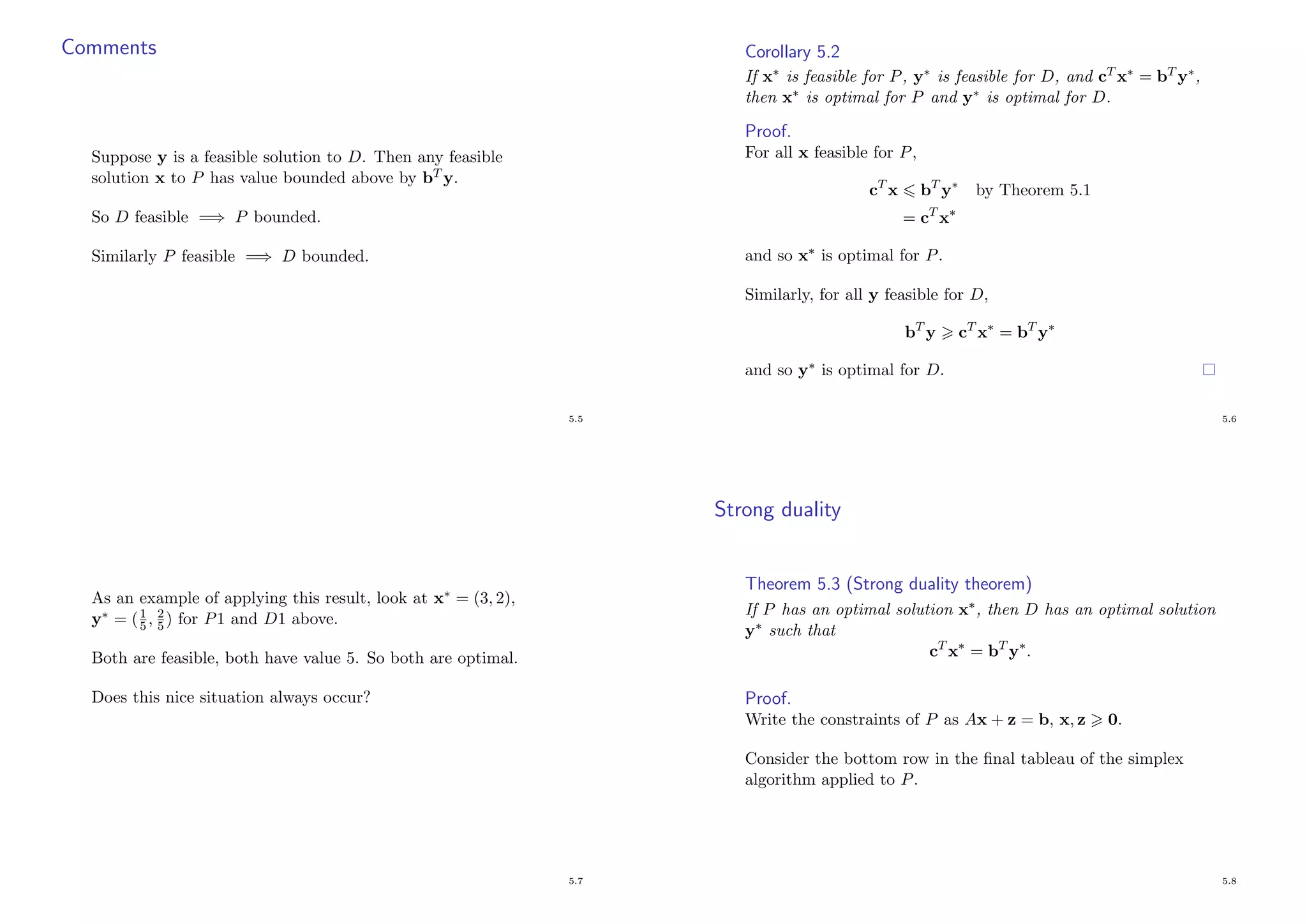
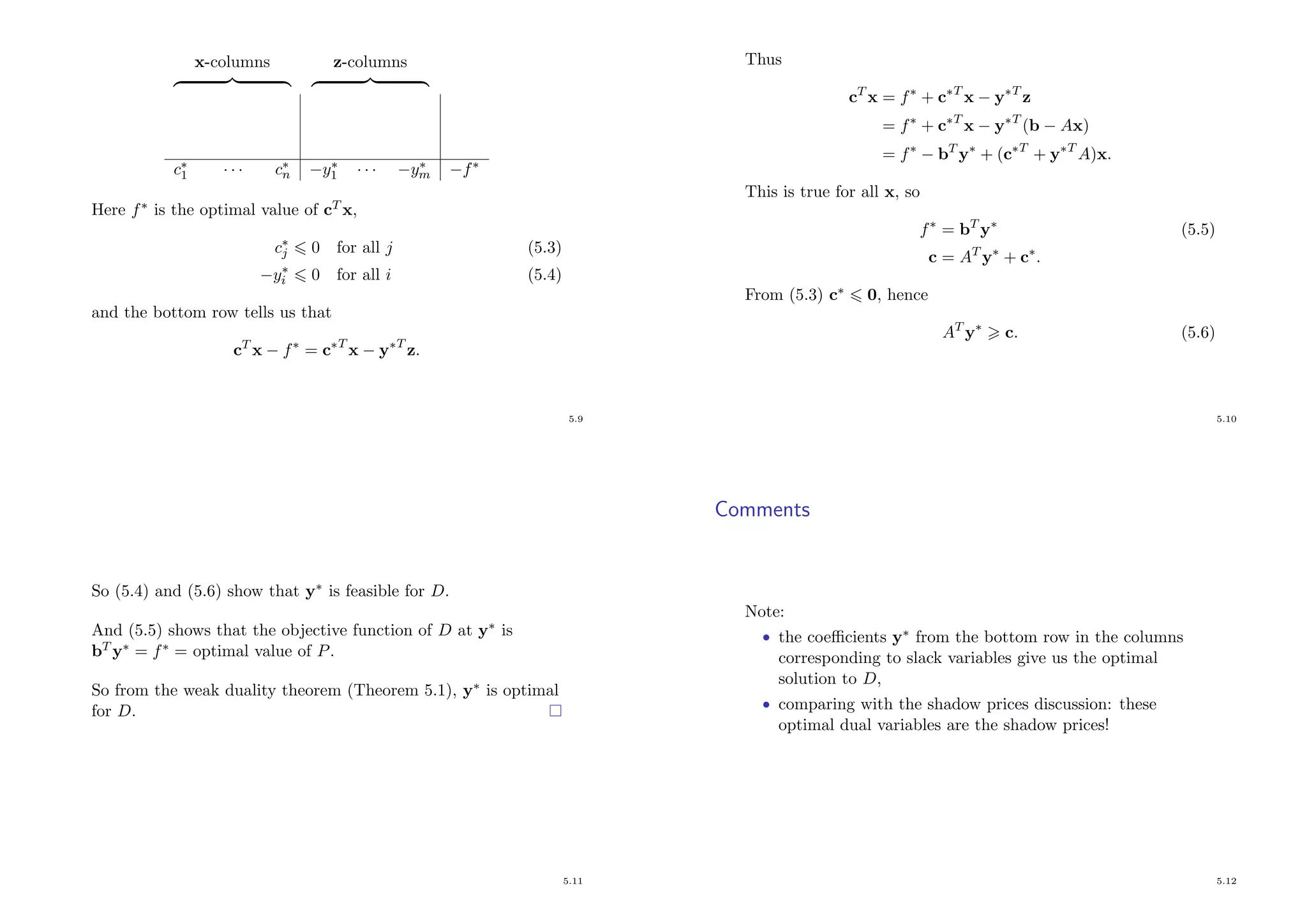

![(3) Suppose raw material 1 is available at a price < 5
4 per unit.
How much should you buy? With ε1 > 0, ε2 = ε3 = 0, the
final tableau would be
1 + 2
5ε1
· · · 1 − 1
5ε1
1
2 + 1
20ε1
For this tableau to represent a BFS, the three entries in the
final column must be 0, giving ε1 5. So we should buy
5 additional units of raw material 1.
5.17
(4) The optimal solution x∗ = (1, 1, 1
2, 0) is unique as the
entries in the bottom row corresponding to non-basic
variables (i.e. the −1
2, −5
4, −1
4, −1
4) are < 0.
(5) If say the −5
4 was zero, we could pivot in that column
(observe that there would somewhere to pivot) to get a
second optimal BFS x∗∗. Then λx∗ + (1 − λ)x∗∗ would be
optimal for all λ ∈ [0, 1].
5.18
5.19 5.20](https://image.slidesharecdn.com/lp-150202073444-conversion-gate02/75/Linear-Programming-25-2048.jpg)



